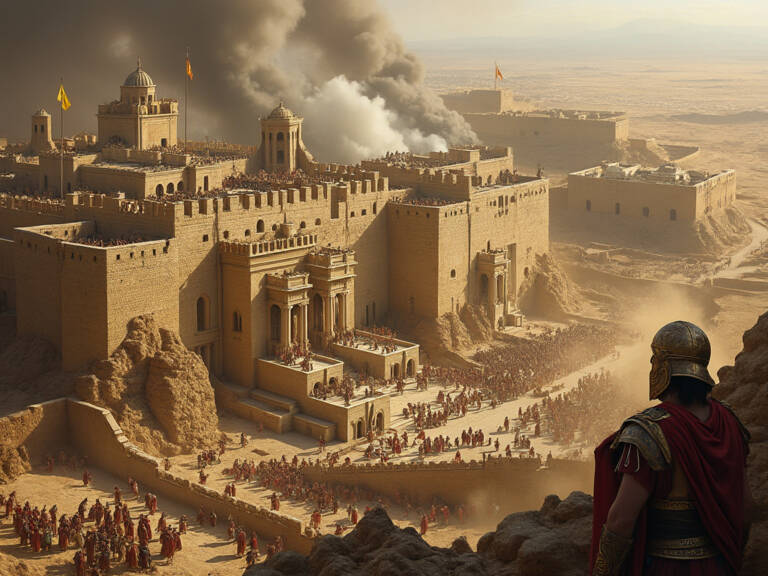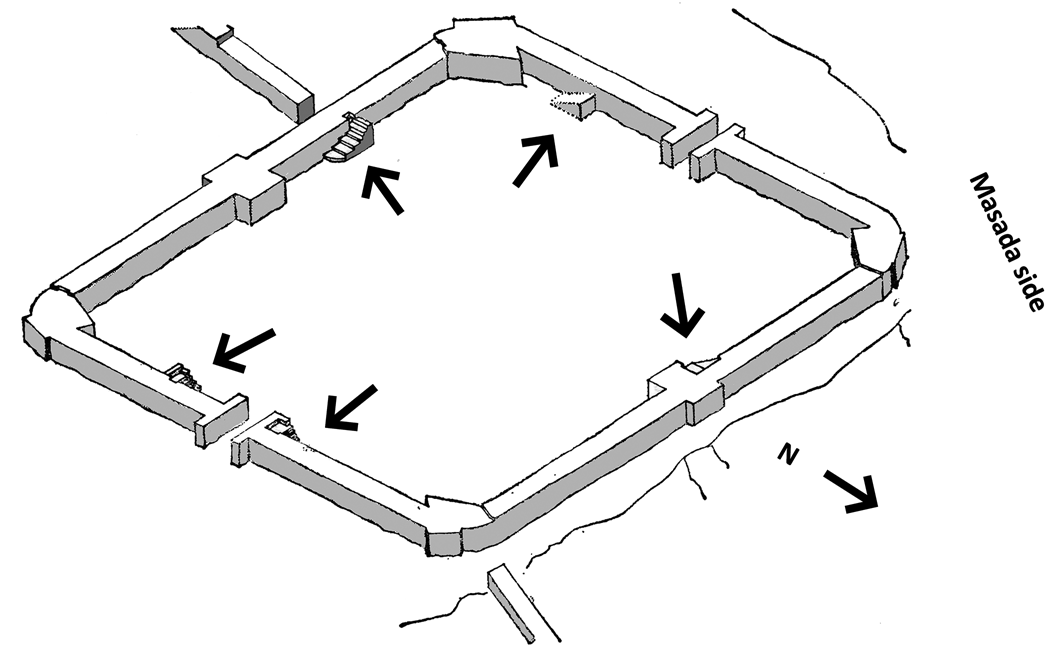Masada: the Romans conquered it in a few weeks, not three years

Researchers at Tel Aviv University's Sonia & Marco Nadler Institute of Archeology have used a range of modern technologies, including drones, remote sensing and 3D digital modeling, to generate the first objective, quantified analysis of the Roman siege system at Masada .
The results indicate that, contrary to widespread myth, the siege of Masad by the Roman army in 73 AD did not last more than a few weeks . So a founding myth of Jewish history turns out to be, to say the least, overrated.
Researchers at Tel Aviv University's Sonia & Marco Nadler Institute of Archeology have used a range of modern technologies, including drones, remote sensing and 3D digital modeling, to generate the first objective, quantified analysis of the Roman siege system at Masada. The findings indicate that, contrary to widespread myth, the Roman army's siege of Masada in 73 AD did not last more than a few weeks.
The study* was conducted by the Neustadter expedition of the Sonia and Marco Nadler Institute of Archeology of the TAU, led by Dr. Guy Stiebel, together with Dr. You have Ashkenazi (now head of geoinformatics at the Israel Antiquities Authority) and doctoral students Boaz Gross (of Tel Aviv University and the Israel Institute of Archaeology) and Omer Ze'evi-Berger (now at the University of Bonn). The study is part of the expedition's broad mission, which deployed advanced tools and asked new questions to attempt a new understanding of what really happened at Masada. The work was published in the Journal of Roman Archaeology.
Dr. Stiebel: “ In 2017 my expedition renewed, on behalf of TAU's Sonia & Marco Nadler Institute of Archaeology, excavations at Masada – a world-famous and extensively explored site since the early 19th century and throughout 20th century. Our expedition asks several new questions and implements many novel research tools that were not available to previous generations of archaeologists. In this way we intend to gain new knowledge about what really happened there before, during and after the Great Jewish Revolt.
As part of this large project we pay a lot of attention to the surroundings of the site. We use drones, remote sensing and aerial photography to collect accurate, high-resolution data of Masada and its surroundings, with particular attention to three aspects: the water systems, the paths leading to and from the fortress, and the Roman siege system. The information collected is used to build 3D digital models that provide us with a clear and precise image of the terrain involved. In the current study we focused on the siege system which, thanks to the remote location and desert climate, is the best preserved Roman siege system in the world .”
Dr. Stiebel adds: “ For many years, the prevailing theory, which has become a modern myth, has held that the Roman siege of Masada was a grueling three-year undertaking. In recent decades, researchers have begun to question this notion, for various reasons. In this study, one of a kind, we examined the question with modern technologies that allow precise objective measurements."
The researchers used drones with remote sensors that provided precise, high-resolution measurements of the height, width and length of all elements of the siege system. This data was used to build an accurate 3D digital model, which allowed the volume of the structures and the time needed to build them to be precisely calculated.
Dr. Ashkenazi: “ Reliable estimates are available of the amount of earth and stone that a Roman soldier was able to move in a day. We also know that approximately 6,000-8,000 soldiers participated in the siege of Masada. We were then able to objectively calculate the time needed to build the entire siege system – eight camps and a stone wall that surrounded most of the site. We found that construction only took about two weeks. Based on ancient historical evidence, it is clear that once the assault ramp was completed, the Romans launched a brutal attack, conquering the fortress in a matter of a few weeks at most. This leads us to conclude that the entire siege of Masada lasted no more than a few weeks ."
Dr. Stiebel: “ The narrative of Masada, the Great Jewish Revolt, the siege and the tragic end as told by Josephus have become part of the Israeli DNA and the Zionist ethos and are well known throughout the world. The duration of the siege is an important element in this narrative, which suggests that it was very difficult for the glorious Roman army to conquer the fortress and crush its defenders. For many years it was assumed that the siege lasted three long years, but in recent decades researchers have begun to question this unfounded belief.
In our first-of-its-kind study, we used objective measures and advanced technologies to clarify the question with the first scientific, data-driven answer. Based on our findings, we argue that the Roman siege of Masada lasted a few weeks at most. As empires throughout history have done, the Romans came, saw and conquered, quickly and brutally quelling the uprising in this remote place.
Our conclusion, however, does not detract from the importance of this historical event, and many puzzling questions remain to be investigated. For example: Why did the Romans put so much effort into conquering this remote and seemingly unimportant fortress? To answer this and many other intriguing questions we initiated a large and innovative project in and around Masada – collecting data and analyzing it thoroughly in the laboratories of TAU's Sonia & Marco Nadler Institute of Archaeology, in collaboration with other researchers, to ultimately shed new light on the old riddle: what really happened at Masada? “.
The fact that the Roman Legion only took a few weeks to conquer the remote fortress of Masada is not surprising, at a time when Roman soldiers were used to carrying out engineering works that still amaze today in a very short time: let's think of Caesar who, in a time of weeks, he built a bridge over the Rhine River, or built two city walls around Alesia. Roman legioans built fortresses and diverted rivers, so for them taking a small fortress, however impervious, was a matter of routine.

Thanks to our Telegram channel you can stay updated on the publication of new Economic Scenarios articles.
The article Masada: the Romans conquered it in a few weeks, not three years comes from Economic Scenarios .
This is a machine translation of a post published on Scenari Economici at the URL https://scenarieconomici.it/masada-i-romani-la-conquistarono-in-poch-settimane-non-in-tre-anni/ on Sat, 07 Sep 2024 19:37:06 +0000.

